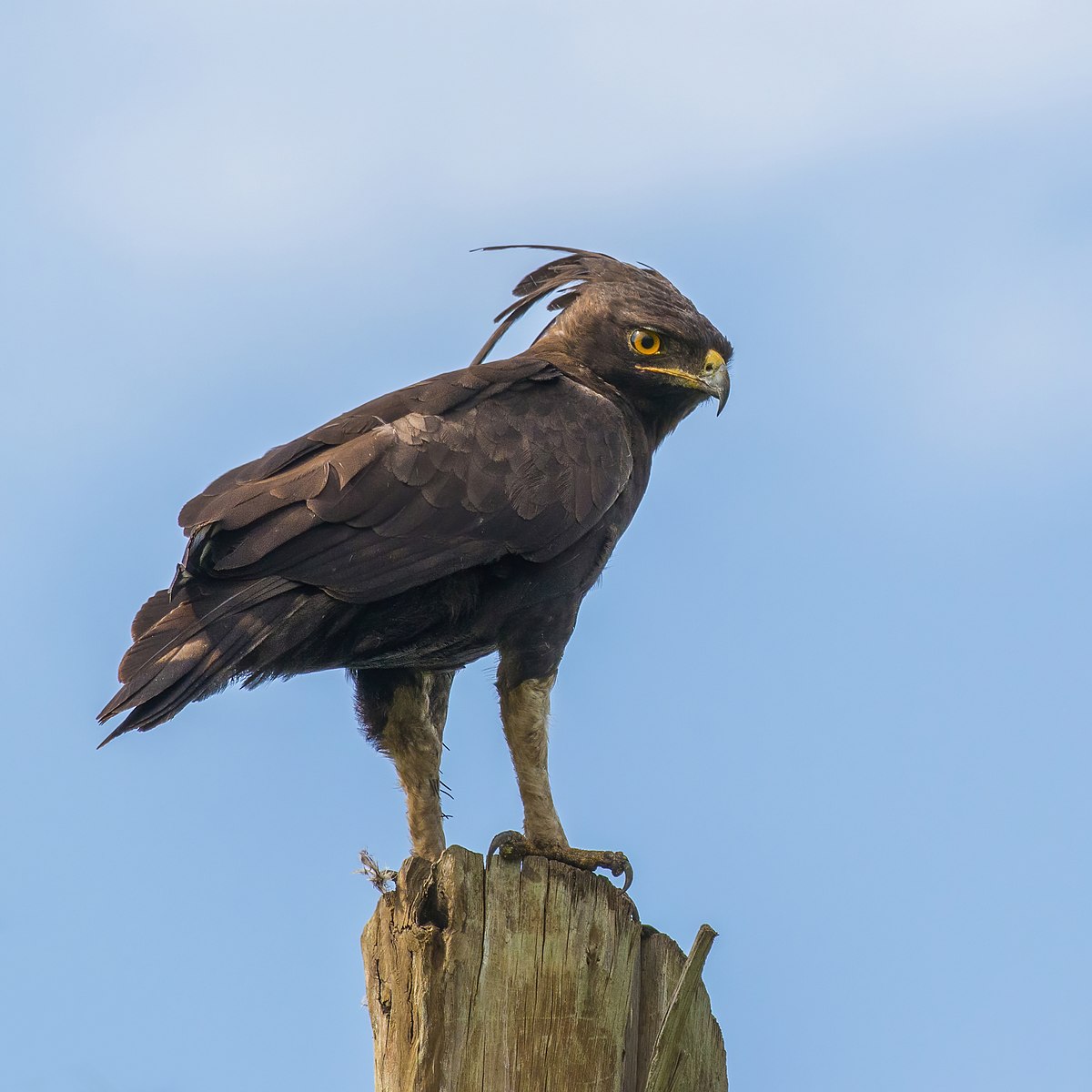The Crested Eagle (Morphnus guianensis) is a large Neotropical eagle with a varied diet primarily composed of mammals, but also including snakes, lizards, and birds. Their diet ranges from small arboreal and terrestrial animals to larger primates, making them a formidable predator in the tropical forests they inhabit.
The Crested Eagle’s Diverse Prey
The Crested Eagle’s diet is remarkably diverse, encompassing a wide range of prey species:
Mammals
- Small arboreal and terrestrial animals such as opossums, kinkajous, squirrels, and various rodents
- Larger primates like spider monkeys, woolly monkeys, and capuchin monkeys
Reptiles
- Arboreal snakes like the emerald tree boa and other terrestrial snake species
- Lizards and iguanas
Birds
- Trumpeters, jays, cocks-of-the-rock, and guans
Interestingly, birds may make up a larger portion of the Crested Eagle’s diet compared to the Harpy Eagle, with reports of Crested Eagles inspecting Harpy Eagle nests and even killing post-fledging young Harpy Eagles. This suggests a level of competition and potential overlap in prey selection between these two large Neotropical eagle species.
Hunting Strategies and Nesting Behavior
 Image source: Long-crested eagle By Charles J. Sharp
Image source: Long-crested eagle By Charles J. Sharp
The Crested Eagle’s feeding strategy is that of a still-hunter, often observed perching for long periods while scanning the surrounding forest visually. They build large nests with shallow cups using bulky sticks, typically located in the main fork of a large tree near the canopy and concealed in greenery.
The breeding season for the Crested Eagle starts in the late dry season and beginning of the wet season around March or April. During this time, the male provides food for the incubating female, and only one hatchling is reared by the female.
Conservation Concerns
Despite their large range, the Crested Eagle is currently classified as Near Threatened by the IUCN due to their high dependence on sprawling forests, which makes them highly affected by habitat destruction. Tropical forests, such as the Amazon, are heavily degraded and logged, unable to sustainably support the Crested Eagle population. They are believed to no longer occur in several former breeding areas where extensive forest has been cleared.
In addition to habitat loss, local hunting and the Crested Eagle’s perching behavior also pose threats to the species, as males are relatively easy to shoot while perched for extended periods.
Conclusion
The Crested Eagle is a remarkable predator with a diverse diet that includes a wide range of mammals, reptiles, and birds. Their hunting strategy and nesting behavior are well-adapted to the tropical forest environments they inhabit. However, the species faces significant conservation challenges due to habitat loss and other human-related threats. Continued efforts to protect and preserve the Crested Eagle’s forest habitats are crucial for the long-term survival of this impressive Neotropical eagle.
References:
– Diet and Feeding Strategies of the Crested Eagle (Morphnus guianensis) – BioOne
– Crested Eagle – Wildlife Facts – Weebly
– Crested eagle – Facts, Diet, Habitat & Pictures on Animalia.bio
– Crested eagle – Wikipedia
– Crested Eagle – Morphnus guianensis – Carnivora

